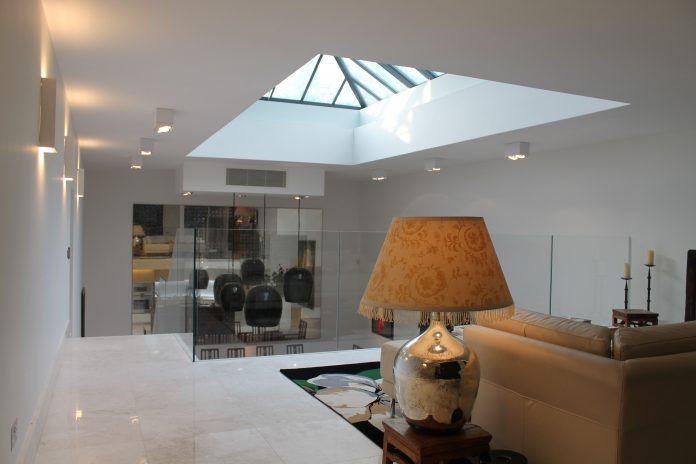Acoustics should be a non-negotiable consideration for our buildings, says Ben Hancock of Oscar Acoustics. Here he explores how housebuilders can tackle the growing issues of noise in homes
Our cities are swelling, 16% more people now live in them since the millennium and in places like inner London, populations have grown by as much as 27% within the same timeframe. As the size and scope of our urban environments increase, so does the level of noise we’re exposed to day-to-day. For many of us, dealing with the sound of a busy street or a noisy neighbour is commonplace, particularly for those living in apartment blocks. Yet for some, the impact can be unbearable, affecting their ability to concentrate, work and sleep.
Long-term, results have shown that this type of exposure is actually killing people. The European Environmental Agency says that excessive noise is responsible for 12,000 premature deaths per year across the EU – which just shows the scale of the issue.
Lack of clarity around Building Regulations
Excessive noise transmission between flats and apartment buildings is one of the main causes, where insulation and soundproofing materials will either have been installed poorly or, in some cases, left out entirely. It means that floors below are left unprotected from the banging of interior doors, footsteps or intrusive TV volumes, allowing sound to permeate ceilings unchecked.
What’s more, a lack of clarity around Building Regulations is creating further problems. Building Regulations Document E sets minimum standards for soundproofing residential buildings in England and Wales. However, while these ensure new builds and conversions comply, the standards don’t apply to existing dwellings, leaving hundreds of thousands of previously built properties with inadequate sound insulation.
How do we stop noise in homes?
The simplest way to deal with noise from above is by installing an isolated ceiling, also known as a floating ceiling, with fire-rated acoustic hangers. This ingenious but simple solution works by absorbing the vibrations that occur between floors, preventing the transfer of noise for a more serene living environment.
It’s the perfect solution for those living in flats and apartments, as all work is carried out below so there’s no need to disturb neighbours above. The right systems are also height-adjustable so it can even be used across uneven joists with minimum ceiling height loss (as little as 6mm). This is much easier than installing acoustic flooring because there is no need to alter the heights of skirting boards and doors.
As of 28 April, the Building Safety Bill finally became the Building Safety Act. This has thrown a spotlight on how construction products perform and if they’re safe to use within building projects. It means that third-party tested accreditation is more important than ever, and contractors and developers should prioritise this above all else when searching for the right acoustic hanger.
Ensuring the acoustic hanger has a fire rating of over 90 minutes and is compliant with British Building Regs Approved Document E for airborne and impact sound is vital. Choosing anything less could be a risk to life in an emergency situation.
Soundproofing solutions
Cavity fill insulation is another soundproofing solution. It works by creating “dead air” spaces between and within its fibres so that sound transfer is less able to penetrate through walls. It can be used in areas of any size and when used in conjunction with other soundproofing products, can make soundproofing homes and spaces even more effective. It’s one of the quickest and most effective ways to tackle unwanted sound transfer and can also lower heating bills by trapping heat, helping homeowners to manage the rising cost of energy.
Typically, this can be sprayed into a cavity before the void is closed or blown through carefully drilled holes on existing structures. It seals any gaps and cracks in the wallboard, around electrical outlets, plumbing and other irregularities, so there are no compressed areas or voids to allow sound leaks or air infiltration.
With sustainability high on the agenda, builders should opt for products that come with green credentials. Recycled thermal sound insulation products, made from natural, paper-based fibres are available, helping to lower the environmental impact of builds. As always, fire safety should be front of mind and it’s crucial that all acoustic products are fire-rated and adhere to the latest industry standards.
UK construction has a major role to play in improving noise in homes
With more of us working from home than ever, it’s high time that the UK construction industry begins to take responsibility for the issue of noise in homes. Statistics from the Charted Institute of Environmental Health show that noise is the single largest issue of complaint made to local authorities in the UK and over 80% of people report being exposed to noise pollution in their homes. A recent report also found that noise complaints increased by 54% between 2019-20 and 2020-21 in 89 local authorities.
Inadequate soundproofing and a lack of consideration for acoustic solutions are partly responsible for our growing noise problems, and UK construction has a major role to play in improving standards.
The topic is now gaining momentum and soon more would-be homeowners will be asking for proof that soundproofing solutions have been properly considered before buying. Housebuilders who properly address soundproofing will stand to benefit – improving their ability to sell homes by creating calmer spaces that soothe rather than stress the occupants. By doing so, I believe we can take a step toward improving the country’s mental and physical well-being, which starts with a peaceful home environment.
Ben Hancock

Managing director
Tel: +44 (0)1474 854902














